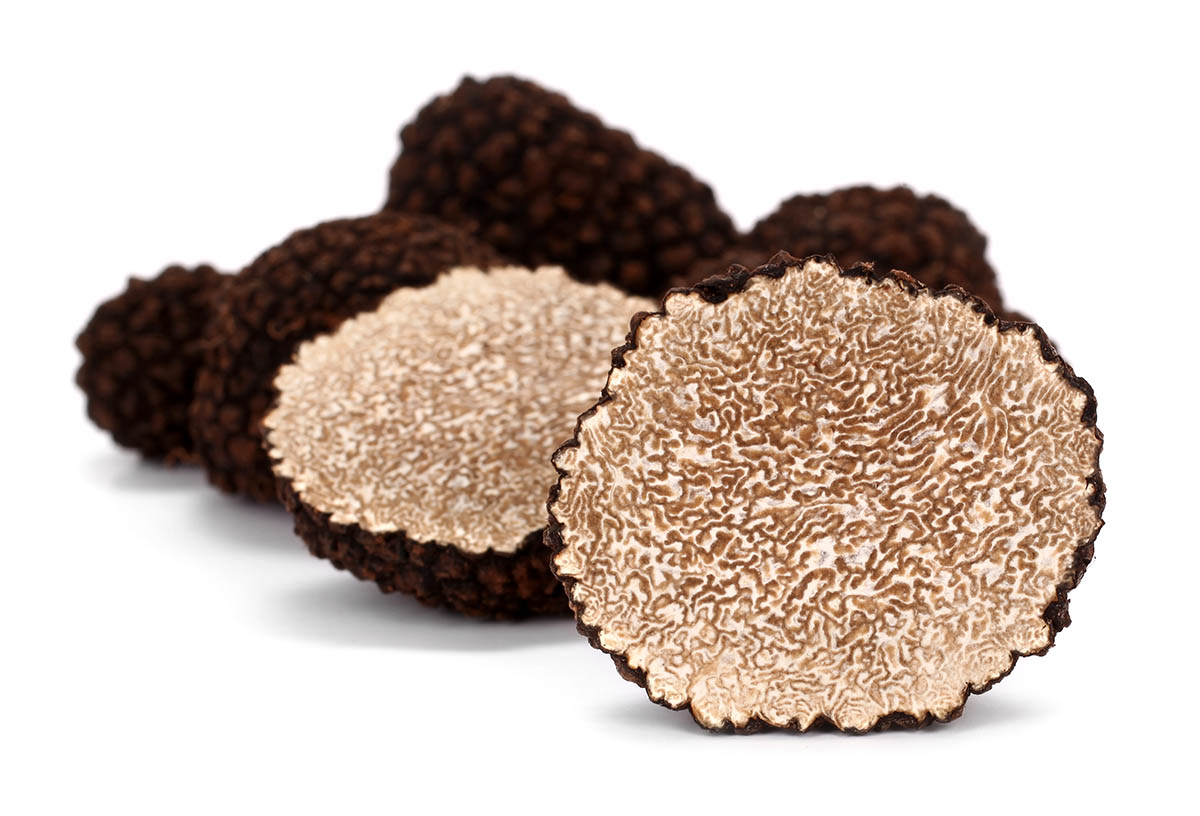To botanists, Tuber melanosporum is a fungus that grows on tree roots underground. Gourmets give it a classier name: the black Périgord truffle. Once only produced in certain areas of France, Italy, and Spain, black truffles are now cultivated all over the world—including locally.
Seeing truffle farms in New Zealand gave Pat Martin and her husband, John, an idea for their retirement: a quiet rural life, running a small-scale business that would give them an excuse to travel. In 2007 they bought land west of Culpeper, began nurturing English oak seedlings inoculated with Tuber melanosporum, and launched Virginia Truffles LLC.
“For truffle farming, you have to be in it for the long haul,” Martin says. It can take four to eight years before the transplanted trees’ roots produce truffles—but, as farmers know, there are no guarantees. The Martins saw their first truffle harvest (“two really nice ones”) in 2018. They now have six acres of trees*; last year’s harvest was seven pounds—not bad for a product that sells for more its weight in gold.
Martin’s daughter Olivia Taylor, who has degrees in biology and environmental science, jumped in to help manage the tree nursery. Then came the challenge of actually finding the product—so Taylor was off to Provence to learn how to train truffle-hunting dogs. (Most professional truffle operations use dogs, she says; “truffle-hunting pigs are only for the tourists.”)
Taylor now has three trained dogs, and during the harvest season (December to March) offers truffle-lovers a chance to hunt for their own. The hunts include a backgrounding on truffles, advice on storage, and recipe tastings around the firepit.
Why so much fuss over a simple fungus? Partly, it’s the mystique that surrounds any rare ingredient. But truffle-lovers swear by its rich, earthy aroma and a taste sometimes called a mix of earth and chocolate. Fresh truffle can be thinly sliced directly into a dish, and when stored properly (wrapped in a paper towel in an air-tight container in the refrigerator), lasts 10 to 14 days. Storing truffle along with a high-fat food (eggs, butter, cream) imparts its unique aroma and taste. Leftover bits can also be frozen and used to infuse oil, butter, cheeses, and sauces (truffle aioli, anyone?).
As always, buyers beware: Taylor cautions that truffle “flavoring” (as in commercially made truffle oils or dressing) is a synthetic approximation. If you want the real experience, buy the real fungus.
*While English oak is not a native tree, it is not considered invasive. Olivia Taylor says research indicates the specific conditions Tuber melanosporum requires make it unlikely it will “escape” or hybridize with native truffle species.
